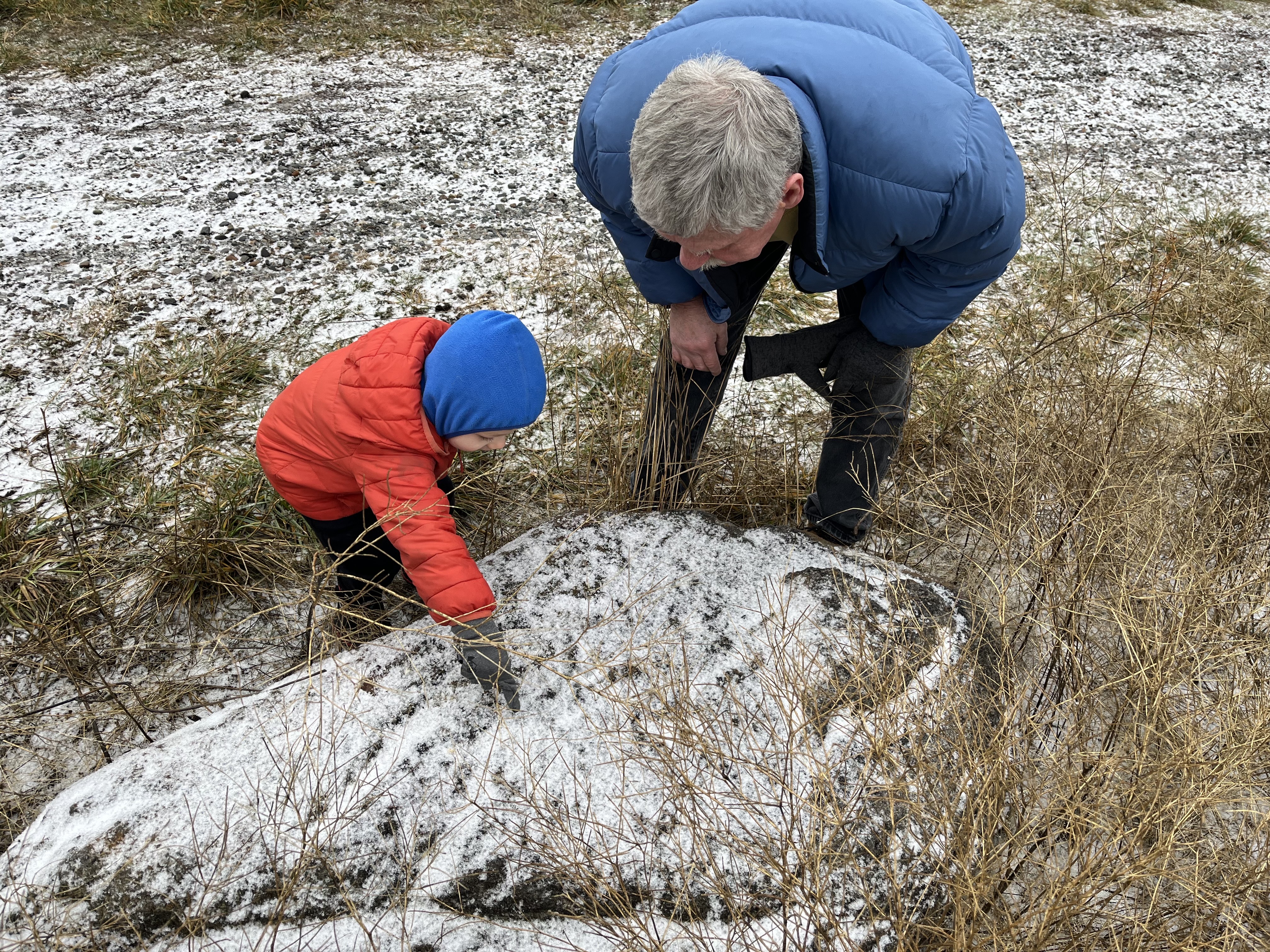 Washington Trails
Association
Washington Trails
Association
Trails for everyone, forever
Winter is the ideal time to slow down and look for the subtle signs of wildlife on trail. Here are some tips to get you started. By Jack Shaw
Seeing wildlife in their natural environment is one of the great joys of hiking. Even if you never see them, you can see signs of the creatures you’re sharing the trail with. Learning to watch for such signs can make you more aware of your surroundings and help you find a new appreciation of the natural world.
Recognizing signs of nearby animals requires you to be mindful and observant. If you’re hiking with children, it’s a great way to connect them to the outdoors. Once they know the basics, you can let them explore and supervise while they search.

Tracks are among the most recognizable signs of nearby wildlife — and may be easier to spot in the snow or on muddy ground. Here are some clues to help you identify animal tracks:
Toes: Take note of their number, positions and claws. Mountain goat tracks, for example, show two cloven toes. Bighorn sheep tracks appear similar, but with larger and deeper imprints.
Stride pattern: Prints can be close or wide, straight or meandering. Hopping animals like hares can be recognized by tracks that move side by side, while trotting canines will place their back foot on or near where their front foot left off.

Review the tracks checklist. What animal do you think made this? Photo by trip reporter mossy-mom
Size: A ruler is a valuable tool when identifying tracks with common features. Bobcats have prints very similar to mountain lions but at about half the size — 2 inches versus 4 inches.
Location: Where you find a print, and how it relates to other prints, can give you clues to what was going on. For example, finding snowshoe hare prints close to lynx probably means the cat was on the hunt. If you widely spaced tracks, it most likely means the animals were moving quickly.
Compare the relative prints of a domestic dog, coyote and gray wolf. They look so similar that only experienced trackers can easily tell them apart.

A coyote print. Snow makes it easy to watch for tracks. Photo courtesy of WTA archives
Gray wolf: Paw size is 4-5 inches. These are the biggest canine tracks you are likely to see. The inner toes appear bigger than the coyote tracks, and the outer toes may splay. All four claws usually show in tracks.
Coyote: Half the size of a gray wolf’s prints. The inner toes appear smaller and more square. The prints typically have clear edges, but the claws of the outer toes may not show.
Domestic dog: These are the hardest to distinguish from coyotes as they are roughly the same size. However, coyote toes are close together, whereas dog prints have wider spacing and are less likely to display claw marks.
Droppings can also tell you a lot about what wildlife is nearby. Here’s another place to break out the handy-dandy ruler. You’ll also need a pair of gloves.
Placement: If it’s near a tree, it’s likely to be an animal that climbs, like a squirrel. Conversely, big cats often bury their scat.
Size: If the scat is only an inch long, you can assume it didn’t come from a bear. If it’s very small, you know you are likely dealing with a squirrel or chipmunk.
Shape: Cat poop tends to be pointed on each end. Deer or elk poop is often in pellets. Coyote scat has longer tapers and irregular shapes.
What’s inside: If you see bones or fur, you’re looking at the poop of a carnivore or an omnivore. The poop of herbivores is often grassy and breaks apart easily.
Animals sometimes rub against a tree, leaving a sign behind. Examining the size and extent of these rubbings helps you recognize what kinds of local wildlife you may have nearby.
You might find soft bits of fur clinging to tree limbs. How high are they on the tree? Low clumps might indicate a raccoon, but higher ones can be deer. Examining the surrounding area can provide valuable intel about where the creature came from and where it is heading. Color and texture can help you guess what you might be seeing.

Look for scratches on trees and you might find animal sign. Photo by Marty Barney
Bear rubbings and scratch marks are often easy to spot — they’re large and remove a considerable amount of bark.
You can also watch for signs of beaver — if you find gnawed trees or sticks, it’s likely a beaver lives nearby.
 A grandparent and a three-year-old looking for tracks in a dusting of snow along a trail in the Antoine Peak Conservation Area. Photo by Loren Drummond
A grandparent and a three-year-old looking for tracks in a dusting of snow along a trail in the Antoine Peak Conservation Area. Photo by Loren Drummond
Motivating kids to get outside in winter can be a challenge, but searching for tracks makes a game of hiking or snowshoeing. Even if you don't spot wildlife tracks, even following dog or boot prints in the snow can keep little legs moving.
Here are a handful of picture books to introduce the idea before you bundle up:
Jack Shaw is the Outdoors editor for Modded Magazine and a regular contributor for Trekaroo and Duluth Pack. An avid outdoorsman, he frequently retreats into nature to explore his environment and encourages others to
do the same.